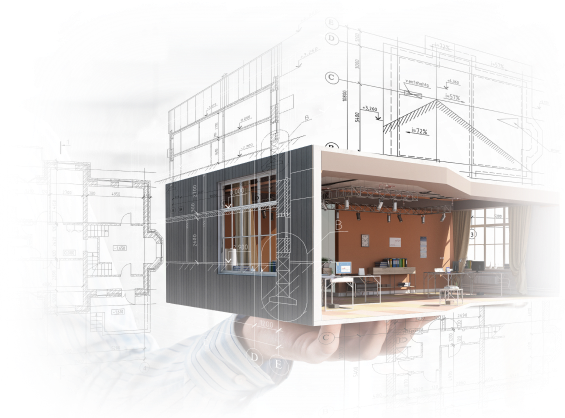The Impact of Personalization on Furniture Manufacturing
The furniture industry is evolving at a significant pace, reconciling old-fashioned workmanship with the needs of the dynamic market in which we live. Today’s end-users do not want mass-produced furniture; they need narratives embodied in their pieces and reflecting their personal preferences as well as values. The shift towards customization has made furniture making complicated hence changing the entire landscape of the industry.

Consumer Trends Leading to Personalization
There has been a radical transformation in how modern customers view furniture shopping. It is no longer about buying, but investing in products that represent them by showcasing who they are and what they stand for. One of these drivers includes a healthy appetite for an original customized product that mirrors consumer behavior during digital eras. According to polls, nearly 65% of buyers prefer bespoke pieces, exposing an urge for self-expression among individuals. Furthermore, this concept of personalization has become intricate due to environmental consciousness and ethical orientation as key factors affecting customers’ choices.
Role of Technology in Personalization
Technological progress has been vital to the ability of the furniture industry to make things more personal. Three-dimensional (3D) printing and Computer Numerical Control (CNC) machining are the key technological developments that have transformed this sector by making the manufacturing process possible for complex designs, rapid prototyping, and at a fraction of traditional ways cost. Aided reality or AR applications enable customers to see how they would fit their pieces into space hence enhancing personalization experience.
The Interactive 3D configurator is one tool that has undergone significant changes during this transition. It allows customers to design or personalize their furniture in real-time, with different options for materials, colors, and styles as well as adjustments on dimensions based on what exact specifications an individual might require. With the application of 3D configurators, customer experiences, and satisfaction increase while manufacturers gain a better understanding of consumer tastes that help them predict patterns and respond with better fitting solutions.
Issues that Inhibit the Adoption of Customization
However, there remain hurdles to overcome for manufacturers before personalization can be embraced. These include having to reengineer production processes, handling the logistical challenges, and increasing costs for custom manufacturing. Still, modular designs and the utilization of data analytics in understanding customer desires are some strategies that can help avert these barriers. Manufacturers can adopt these approaches to be more adaptable to market changes thus allowing them to produce personalized products more efficiently.
Merits of Customization by Manufacturers
Manufacturers gain several advantages from personalizing their products: differentiation and competition, improved customer loyalty, and chances for higher profit margins. Personalized products are expensive because they are made according to customers’ specific preferences; hence, clients who want such things have to dig deeper into their pockets. Additionally, when a buyer is actively involved in making the product personal it makes his or her ties with the brand stronger.
Case Studies
The breadth of contemporary innovation in the industry is exemplified by the wide range of customization, from Scandinavian companies that use AR for a plunge into space planning to one-off stores using CNC machining to produce unique designs. An interactive 3D configurator is a pivotal addition to this diversity. By allowing customers to design and visualize their furniture on manufacturers’ websites in real-time, they revolutionize online shopping forever. In Europe, several companies have gone as far as letting their customers modify materials, finishes, and sizes via a configurator to simplify manufacturing while making it more engaging. By doing so, these businesses are able to offer interactive customer experiences unlike before, thus redefining how personalization occurs in furniture marketing.
Summing Up
The introduction of personalization within furniture manufacture is a reaction to changing consumer expectations and the possibilities brought about by technological trends. Interactive 3D configurators, for example, have changed the way manufacturers understand and meet customer needs by allowing more customization than would have been possible before now. Inevitably, therefore, as the industry continues to change it will be guided by personalization supported by technological advancements that will create a future where market responsiveness, innovation, and modern consumer preferences are more aligned.
Tell us about your project
Lets get in touch





 Every company that works with transport understands that in the absence of automated fleet management systems, all processes require almost round-the-clock work of a considerable staff of people – dispatchers, logisticians, forwarders, accountants. Depending on the fleet size, the company’s field of activity, the number of delivery orders, and seasonality, the fleet can be served by huge departments that continuously deal with the paperwork and monitor drivers on the phone. Most companies went through this 10-15 years ago, and many are trying to automate their fleet. During this time, a lot of online platforms for transport monitoring have appeared, which partially solve these problems: they optimize the work of personnel, reduce transport costs and help restrain the growing number of employees in the transport department. At the same time, there is a vast number of low-quality monitoring systems: some are very limited in their functionality and do not advance in any way, and some have a massive number of functions that are superfluous for most customers, their interface is too complex and overloaded. Also, many manufacturers of GPS trackers have their own software, which is compatible only with their equipment, and if you want to change the software for some reason, you have to invest in new equipment.
Every company that works with transport understands that in the absence of automated fleet management systems, all processes require almost round-the-clock work of a considerable staff of people – dispatchers, logisticians, forwarders, accountants. Depending on the fleet size, the company’s field of activity, the number of delivery orders, and seasonality, the fleet can be served by huge departments that continuously deal with the paperwork and monitor drivers on the phone. Most companies went through this 10-15 years ago, and many are trying to automate their fleet. During this time, a lot of online platforms for transport monitoring have appeared, which partially solve these problems: they optimize the work of personnel, reduce transport costs and help restrain the growing number of employees in the transport department. At the same time, there is a vast number of low-quality monitoring systems: some are very limited in their functionality and do not advance in any way, and some have a massive number of functions that are superfluous for most customers, their interface is too complex and overloaded. Also, many manufacturers of GPS trackers have their own software, which is compatible only with their equipment, and if you want to change the software for some reason, you have to invest in new equipment. Everyone – system architects, back-end and front-end developers, UI/UX designers, quality control specialists and of course project managers and product managers understand the business values of our customers and do their best to create advanced features with maximum convenience.
Everyone – system architects, back-end and front-end developers, UI/UX designers, quality control specialists and of course project managers and product managers understand the business values of our customers and do their best to create advanced features with maximum convenience.











 In general, all these tools work and can meet the basic needs of the target audience. But there are so many cases when your property is special: it is substantial, has unique architectural features, or is located in a unique neighborhood. Of course, all this has to be adequately demonstrated to a potential investor or client, and you want them to get a hold of the whole “idea” of the property.
In general, all these tools work and can meet the basic needs of the target audience. But there are so many cases when your property is special: it is substantial, has unique architectural features, or is located in a unique neighborhood. Of course, all this has to be adequately demonstrated to a potential investor or client, and you want them to get a hold of the whole “idea” of the property.

 Bees are dying from a variety of factors—pesticides, drought, habitat destruction, nutrition deficit, air pollution, global warming, and more, but it is humans who are directly responsible for the two most prominent causes: pesticides and habitat loss.
Bees are dying from a variety of factors—pesticides, drought, habitat destruction, nutrition deficit, air pollution, global warming, and more, but it is humans who are directly responsible for the two most prominent causes: pesticides and habitat loss. Considering our extensive experience developing IoT solutions, we decided to calculate how much such a device of our own production would cost. During our research, we held a series of consultations with experienced beekeepers and learned about their main concerns and problems in working with bees. Next, we examined the most popular available solutions on the market, and it was evident that none of them provided the entire required set of sensors for complex monitoring.
Considering our extensive experience developing IoT solutions, we decided to calculate how much such a device of our own production would cost. During our research, we held a series of consultations with experienced beekeepers and learned about their main concerns and problems in working with bees. Next, we examined the most popular available solutions on the market, and it was evident that none of them provided the entire required set of sensors for complex monitoring.
 But what if it comes to customizing something more complex such as a home or a car? With such objects, unsuccessful decisions can not only significantly affect the state of our bank account but also negatively reflect on our emotional well-being. Yes, you can turn to designers, who will offer their vision and options, but this again entails spending time and money and does not guarantee a successful result.
But what if it comes to customizing something more complex such as a home or a car? With such objects, unsuccessful decisions can not only significantly affect the state of our bank account but also negatively reflect on our emotional well-being. Yes, you can turn to designers, who will offer their vision and options, but this again entails spending time and money and does not guarantee a successful result. perience working with complex digital 3D assets, but during their development, there was no task of creating a mechanism for deep customization.
perience working with complex digital 3D assets, but during their development, there was no task of creating a mechanism for deep customization.


















